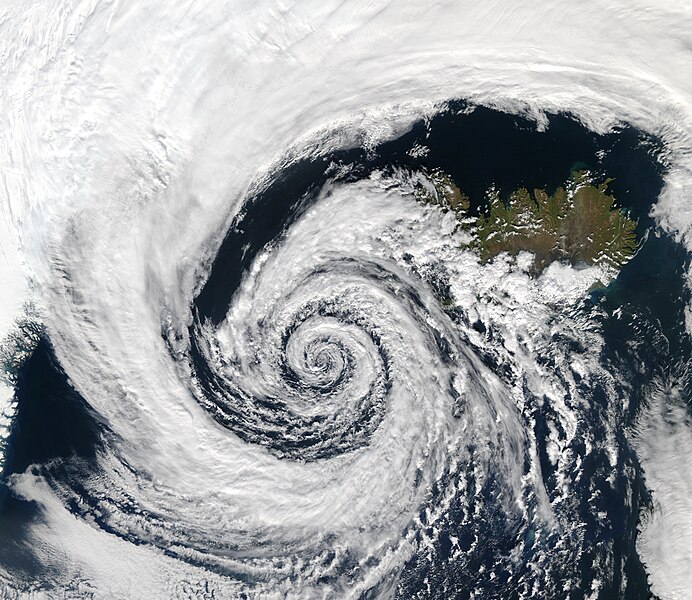File:Low pressure system over Iceland.jpg

Kukura kwe chipandwa ichi: 692 × 600 pixels Zvimwe misimbiro: 277 × 240 pixels | 554 × 480 pixels | 886 × 768 pixels | 1,182 × 1,024 pixels | 2,363 × 2,048 pixels | 6,000 × 5,200 pixels
Fayera repachivambo (6,000 × 5,200 pixels, file size: 3.86 MB, MIME type: image/jpeg)
Nhoroondo ye fayera
Dzvanya pa musi/nguva kuti uringe fayera sekuoneka kwaraita panguva iyoyo.
| Musi/Nguva | Mfananoudoko | Mitandu | Mushandisi | Komenda | |
|---|---|---|---|---|---|
| parizvino | 13:23, 16 Zvita 2009 |  | 6,000 × 5,200 (3.86 MB) | Tryphon | Higher resolution, from http://visibleearth.nasa.gov/view_detail.php?id=6204. |
| 19:14, 4 Mbudzi 2005 |  | 3,500 × 3,033 (2.31 MB) | Brian0918 | A beautifully-formed low-pressure system swirls off the southeastern coast of Iceland, illustrating the maxim that "nature abhors a vacuum." The vacuum in this case would be a region of low atmospheric pressure. In order to fill this void, air from a near |
Kushandiswa kwe fayera
The following page uses this file:
Kushandiswa kwe fayera pasirose
Mawiki anotevera ayo anoshandisa fayera iri:
- Hushandiso pa af.wikipedia.org
- Hushandiso pa anp.wikipedia.org
- Hushandiso pa ar.wikipedia.org
- Hushandiso pa ast.wikipedia.org
- Hushandiso pa beta.wikiversity.org
- Hushandiso pa bg.wikipedia.org
- Hushandiso pa bh.wikipedia.org
- Hushandiso pa bn.wikipedia.org
- Hushandiso pa br.wikipedia.org
- Hushandiso pa ca.wikipedia.org
- Hushandiso pa cs.wikipedia.org
- Hushandiso pa cv.wikipedia.org
- Hushandiso pa cy.wikipedia.org
- Hushandiso pa da.wikipedia.org
- Hushandiso pa da.wikibooks.org
- Hushandiso pa de.wikipedia.org
Ringa kushandiswa kumwe kwe vupasirose kwe fayera rino.



